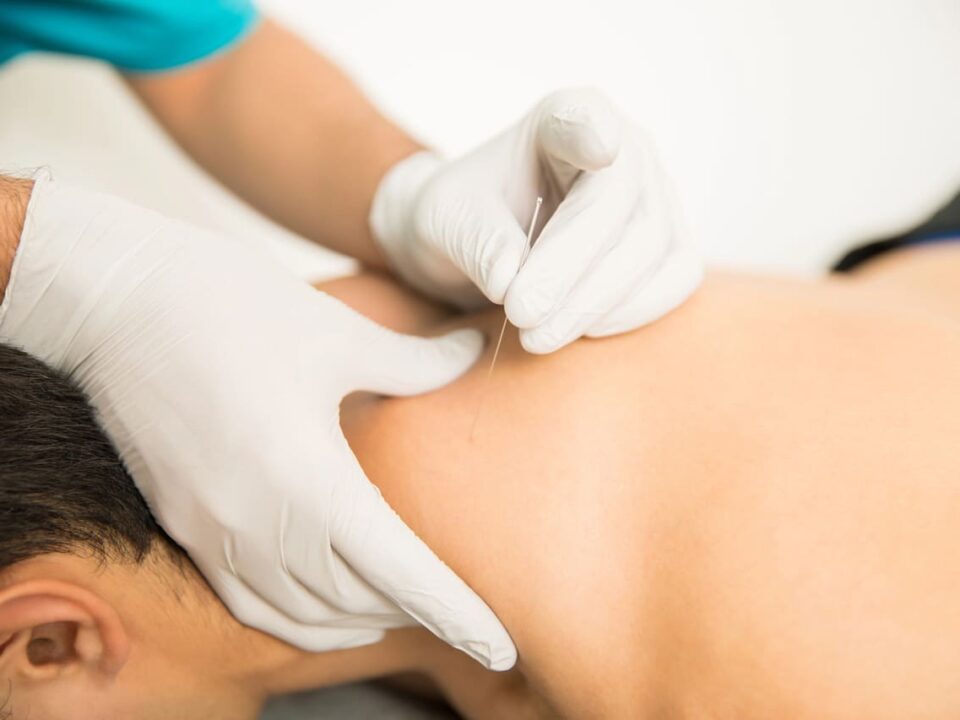
Unravelling the Role of Physiotherapy Treatment for TMJ Disorders in Burnaby
August 21, 2023
From Discomfort to Relief: How Acupuncture Treats Neck Pain
June 17, 2024Back pain is a prevalent issue that affects many people, limiting their mobility and reducing their quality of life. Acupuncture has gained recognition as an effective treatment for back pain. This blog post explores how acupuncture works for back pain, its benefits, effectiveness compared to other treatments, and what to expect during a session.
Understanding Acupuncture for Back Pain
Acupuncture is a traditional Chinese medicine technique that involves inserting thin, sterile needles into specific points on the body, known as acupoints. Inserting these fine needles into the predetermined anatomical points stimulates the muscles, connective tissues, and nerves in your body, aiding pain relief.
For back pain, target specific acupoints that influence the spine, muscles, and nerves are targeted. The insertion of needles at these points stimulates the body’s natural healing processes, enhances blood circulation, releases endorphins, and promotes relaxation.
Benefits of Acupuncture for Back Pain Relief
Acupuncture, when used in conjunction with other treatments such as physiotherapy, offers several benefits for individuals suffering from back pain. One of the primary advantages is its ability to provide natural pain relief without the need for medication. This makes it an attractive option for those who prefer a holistic approach to healthcare or who have had adverse reactions to pain medications.
- Pain Relief: Acupuncture provides significant pain relief by targeting the underlying causes of back pain and stimulating the body’s natural healing mechanisms.
- Improved Well-being: By reducing stress and promoting relaxation, acupuncture can improve overall well-being and help you manage pain more effectively.
- Enhanced Blood Circulation: The improved circulation helps nourish tissues and remove toxins that contribute to pain and inflammation.
What to Expect During an Acupuncture Session
During your first acupuncture session for back pain, the practitioner will conduct a thorough assessment to understand your symptoms, medical history, and overall health. This initial consultation helps them develop a personalized treatment plan tailored to your specific needs.
- Assessment: The session begins with an assessment of your condition and a discussion about your medical history.
- Needle Insertion: You will lie down comfortably, and the practitioner will insert thin, sterile needles into the selected acupoints. Most people feel little to no discomfort during insertion.
- Relaxation Period: The needles are typically left in place for about 15 to 20 minutes while you relax. Some individuals may experience a mild tingling sensation, warmth, or a dull ache around the needle sites, which is normal.
- Aftercare Advice: After the session, you may be provided with additional recommendations, such as exercises, or other complementary therapies to support your treatment.
Potential Side Effects Associated with Acupuncture
Acupuncture is generally considered safe when performed by a trained healthcare professional. However, as with any treatment, there are potential risks and side effects to be aware of. Most side effects are minor and temporary, but it’s important to understand them before starting treatment.
- Minor Side Effects: Some people may experience slight bruising, soreness, or bleeding at the needle insertion sites. These side effects are typically mild and resolve on their own within a few days.
- Dizziness or Lightheadedness: On rare occasions, individuals may feel lightheaded or dizzy during or after an acupuncture session. It’s important to eat a light meal before the session and to stay hydrated to help prevent these symptoms.
- Infection: Although rare, there is a slight risk of infection if the needles are not sterile. Always ensure that your practitioner uses single-use, disposable needles to minimize this risk.
- Exacerbation of Symptoms: In some cases, symptoms may temporarily worsen before they improve. This is often part of the body’s healing response and usually subsides after a few sessions.
Communicating openly about your medical history and any concerns you have will help ensure a safe and effective acupuncture experience.
Can Acupuncture Treat Chronic Back Pain Conditions Like Herniated Discs or Sciatica?
Acupuncture can be an effective treatment for chronic back pain conditions such as herniated discs and sciatica.
For those with herniated discs, acupuncture can reduce inflammation, improve blood flow, and relieve pressure on the affected nerves. This helps decrease pain and improve mobility, making it easier for you to engage in other treatments, such as physiotherapy.
Acupuncture can also be beneficial for sciatica, a condition characterized by pain that radiates along the sciatic nerve from the lower back down to the legs. By stimulating specific acupoints, acupuncture can reduce nerve irritation, alleviate pain, and improve overall function.
While acupuncture alone may not completely resolve these chronic conditions, it can be a valuable component of a comprehensive treatment plan. Combining acupuncture with other therapies can enhance overall outcomes and provide more sustained relief.
What to Do Before and After an Acupuncture Session
Preparing for and following up after an acupuncture session can help maximize the benefits and ensure a positive experience.
Before the Session:
- Eat Lightly: Have a light meal or snack before your session to prevent dizziness or lightheadedness. Avoid heavy meals or alcohol.
- Wear Comfortable Clothing: Opt for loose-fitting clothing that allows easy access to the areas where needles will be inserted.
- Hydrate: Drink plenty of water before your session to stay hydrated.
After the Session:
- Rest: Take it easy for the rest of the day to allow your body to process the treatment and begin healing. Avoid strenuous activities or heavy lifting.
- Stay Hydrated: Continue to drink plenty of water to help flush out any toxins released during the session.
- Follow Recommendations: Adhere to any post-treatment advice given by your healthcare provider, such as specific exercises or stretches.
- Monitor Your Response: Pay attention to how your body responds to the treatment. Some people may feel immediate relief, while others may notice gradual improvements over several sessions.
Transform Your Health
Acupuncture offers a holistic and effective approach to managing back pain, providing natural relief without the need for medication or invasive procedures. By understanding the process, benefits, and what to expect during a session, you can make an informed decision about incorporating acupuncture into your back pain management plan.
If you’re struggling with back pain, consider acupuncture at Burnaby Heights Physiotherapy. Our experienced practitioners are dedicated to providing personalized care and helping you achieve optimal health and function. Contact us today to start your journey toward a pain-free life.






